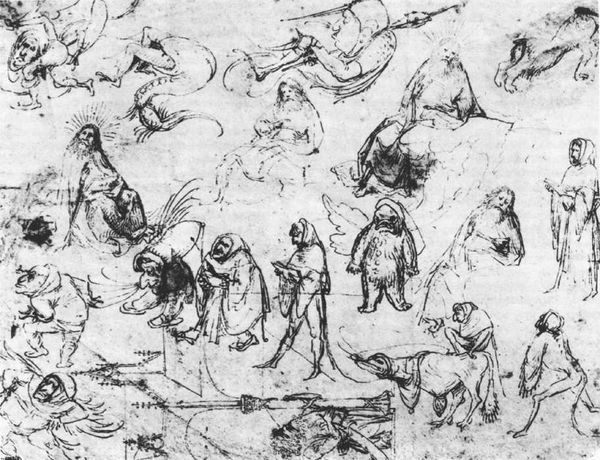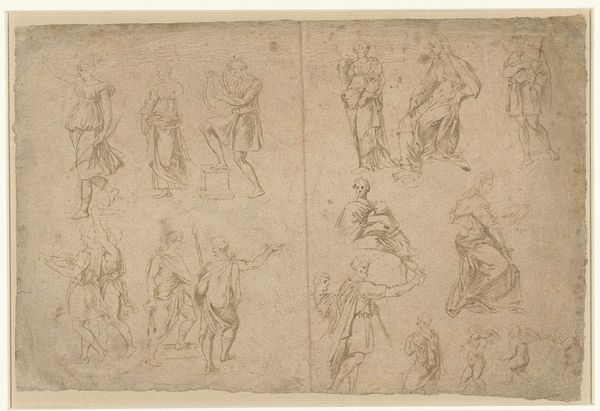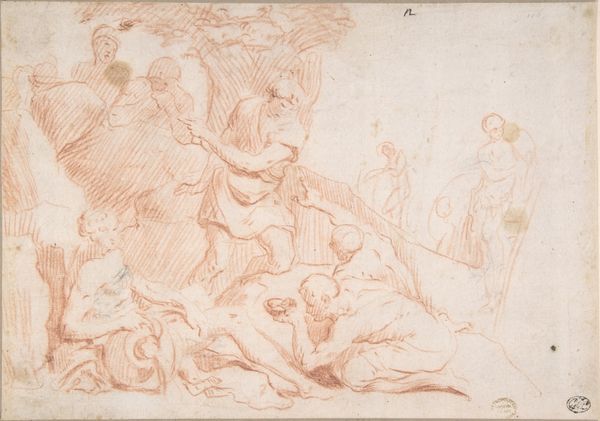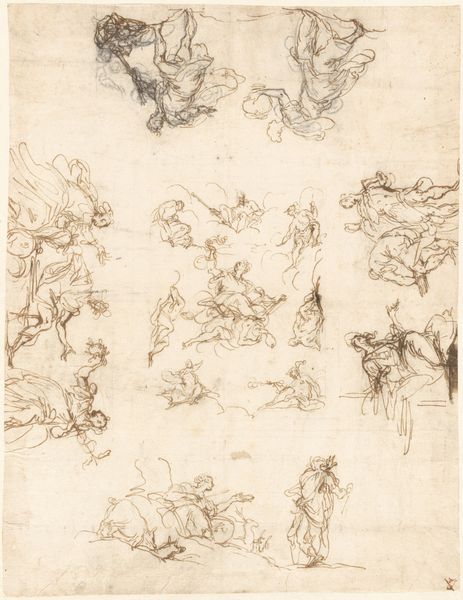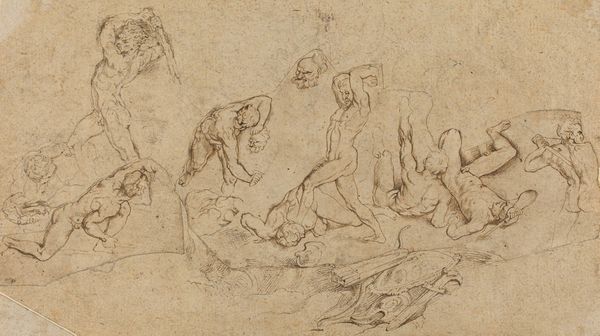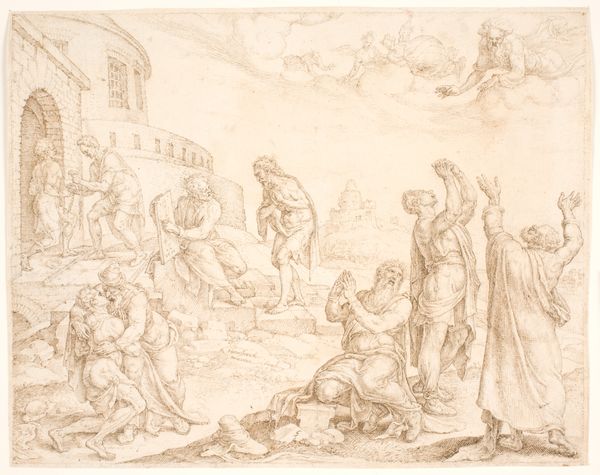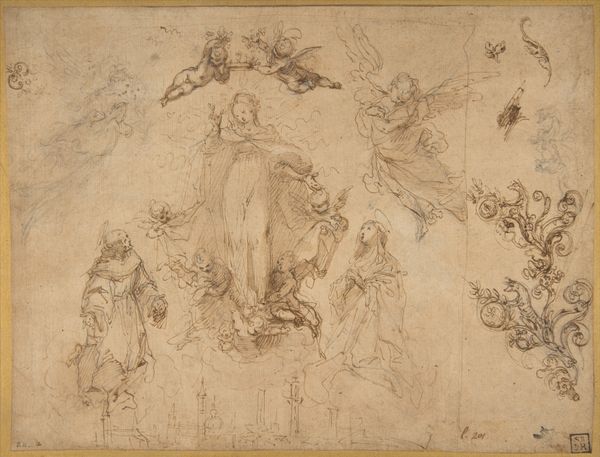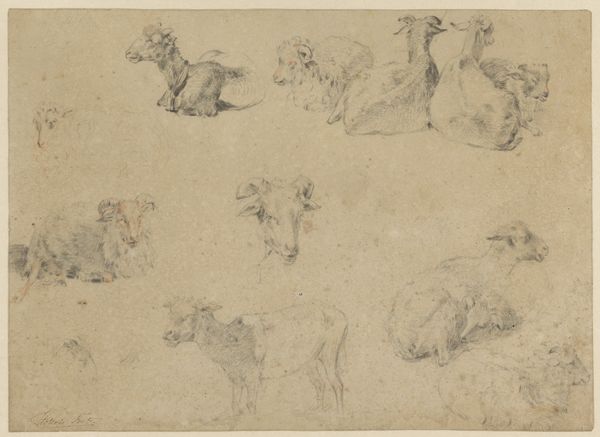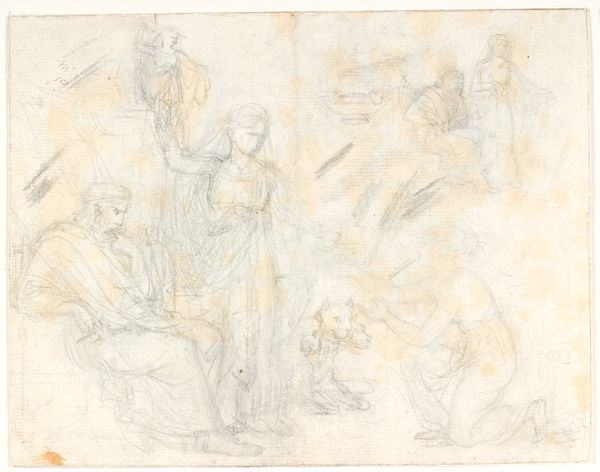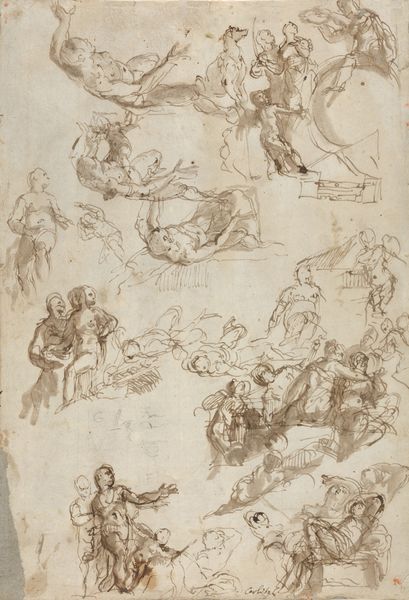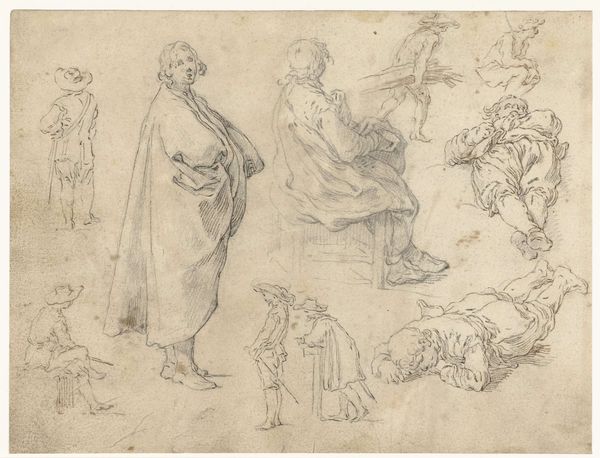
drawing, ink, pen
#
drawing
#
allegories
#
toned paper
#
allegory
#
ink painting
#
symbol
#
pencil sketch
#
etching
#
figuration
#
ink
#
christianity
#
human
#
pen
#
watercolour illustration
#
history-painting
#
northern-renaissance
#
christ
Copyright: Public domain
Editor: This drawing, “Sketches for a Temptation of St. Anthony” by Hieronymus Bosch… I’m not sure of the exact date, but it's ink on toned paper. It looks like a chaotic menagerie! What first strikes you about the symbolism within this piece? Art Historian: My eye is drawn to how these disparate figures converge upon the central theme. Bosch clearly grapples with the visual representation of temptation. What kinds of symbolic cues do you notice being repeated? Editor: Well, a lot of the figures seem to be wearing monastic robes… but they also have bizarre animalistic features. Like, is that a creature with a bird head and wings? Art Historian: Exactly. Consider what such imagery might represent within a Christian framework of the late medieval period. Birds, for example, have often symbolized spiritual messengers, but here, corrupted with other monstrous forms, what transformation do you think Bosch evokes? Editor: Perhaps, it reveals the corruption within the Church? Showing temptation as a monstrous hybrid of the spiritual and the profane? Art Historian: That’s perceptive. And what about the recurring figure of St. Anthony himself? What does his placement within the composition suggest to you? Consider that in some iterations, he is very small and beset upon. Editor: He seems surrounded, almost overwhelmed, but also contemplative… suggesting an internal battle as much as a physical one. This feels less like observation, and more like a delve into psychological fears that plagued society then... Art Historian: Indeed. Through these arresting symbols, Bosch externalizes our deepest anxieties about sin, faith, and our own human frailty. Editor: I had been stuck on the monstrous figures but I had missed how much these symbols mean to Bosch’s greater message, thanks! Art Historian: Likewise! Thinking about Bosch through a symbolic lens, reveals more universal themes and shows the complexity of interpreting religious narratives.
Comments
No comments
Be the first to comment and join the conversation on the ultimate creative platform.


